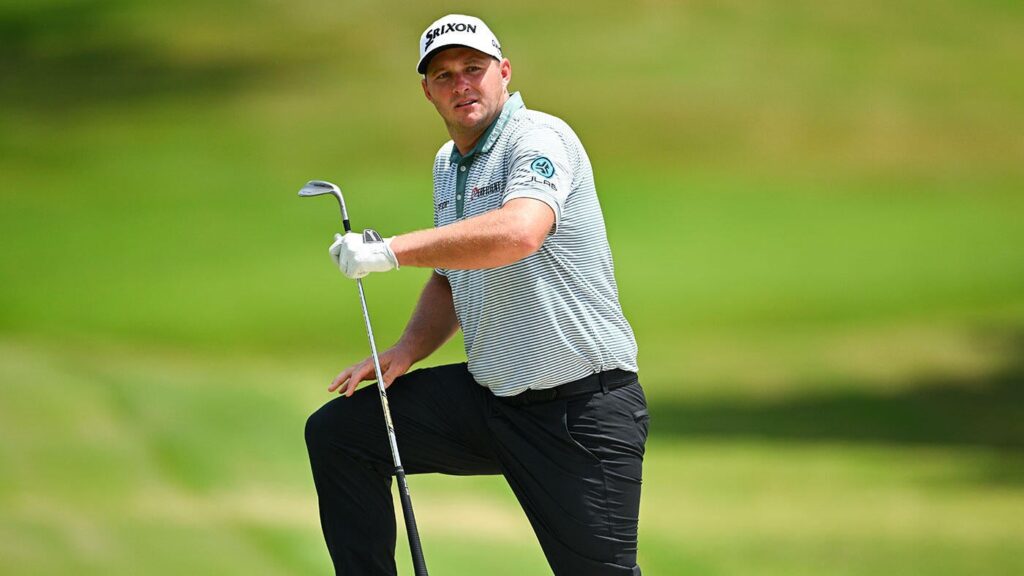You’ve hit a great drive down the fairway, but when you get to your ball it’s not sitting pretty on flat grass. Instead, it’s perched on a slope. What now? Uneven lies are part of real golf, and knowing how to handle them makes a huge difference in your scorecard.
Let’s walk through the main slopes you’ll see, how they affect the ball, and the simple adjustments that will help you pull off the shot.
Why slopes matter
Flat lies let you swing normally and expect a consistent ball flight. Slopes, on the other hand, change everything including your balance, your swing plane, even the way the clubface meets the ball. A small tilt in the ground can turn a straight shot into a hook or a slice, or cost you ten yards of distance. The good news? Each type of slope tends to have predictable patterns.
Uphill lies
When you’re standing on an uphill slope, expect your ball to fly higher and fall shorter than usual. For right-handed golfers, it also tends to move a little left.
Quick adjustments:
- Take one extra club to make up for lost distance.
- Play the ball slightly forward in your stance.
- Aim just right of your target to allow for the leftward movement.
Smooth swings work best here. Let the slope add the height as you don’t need to help it.
Downhill lies
The opposite slope produces the opposite flight: lower trajectory, less spin, and often a shot that fades to the right. Almost think of it as clubbing down, so your 7-iron can become closer to your 6-iron.
Quick adjustments:
- Position the ball a touch back in your stance.
- Match your shoulders to the slope to avoid fighting the ground.
- Aim slightly left of the target to allow for the fade.
Downhill shots can actually travel a little farther, but they’re harder to stop on the green.
Ball above your feet (sidehill lie)
When the ball is above your feet, the clubface naturally wants to close, leading to a draw or hook.
What to do:
- Choke down on the grip for more control.
- Aim right of your target.
- Stay balanced and don’t lean into the hill too much.
Ball below your feet (sidehill lie)
This is one of the toughest lies, because you feel like you’re reaching for the ball. The club tends to stay open, sending shots to the right.
What to do:
- Widen your stance and flex your knees to get down to the ball.
- Aim left of your target.
- Grip firmly and focus on solid contact, even if you lose a bit of distance.

Four rules to remember
If you forget everything else, just keep these in mind:
- Uphill: higher, shorter, often left.
- Downhill: lower, longer, often right.
- Ball above feet: goes left.
- Ball below feet: goes right.
Those four reminders will cover 90% of uneven lies.
How to practice slope shots
The challenge with slopes is that most driving ranges are flat. But there are still ways to work on them:
- Seek out uneven spots. At your range or short-game area, look for natural slopes or divots where the ball sits above or below your feet.
- Simulate slopes. Drop balls on the side of a hill around the chipping green, even if you’re just hitting wedges. The principles carry over to full swings.
- Course practice. When the course is quiet, drop a few extra balls on different slopes during casual rounds. Nothing beats real on-course experience.
- Focus on balance drills. Practice swinging with more knee flex (for below-ball shots) or more upright posture (for above-ball shots) so your body gets used to those setups.
Practicing these lies may feel awkward at first, but the more you expose yourself to them, the less surprising they’ll feel during your round.
Final thoughts
Slopes don’t have to be intimidating once you know the patterns. Next time you find yourself on a hill, take a breath, make the right adjustment, and trust the swing. Like anything in golf, the more you practice these shots, the more comfortable they’ll feel and the fewer surprises you’ll face on the course.
FAQ on hitting from slopes
What’s the hardest slope to hit from?
Most golfers struggle the most with the ball below their feet. It forces you to reach for the ball, makes balance harder and almost always causes the ball to leak right. The key is lowering your stance with more knee flex and swinging under control rather than trying to force distance.
Do pros practice slope shots?
Absolutely. Tour ranges often set up practice stations on sloped turf to mimic real-course conditions. Many pros also drop balls on slopes during practice rounds to prepare for tournament setups. For everyday golfers, just taking a few extra shots from awkward spots during a casual round can build confidence.
How much club should I add or take away?
On uphill lies, add at least one extra club since the shot launches higher and loses distance. On downhill lies, you may not need more club because the lower flight carries farther—but you’ll need to think about how the ball will roll out once it lands. Sidehill lies don’t usually affect distance as much as direction, so aim adjustments matter more than club changes.
Can I just “swing normally” on a slope?
You can, but you’ll almost always be surprised by the result. Slopes tilt your body and swing plane, so without adjusting, the ball won’t go where you expect. Even small tweaks like aiming a little left or right go a long way in turning a tough lie into a playable one.
